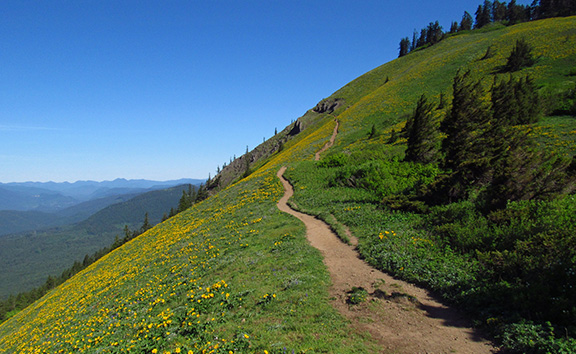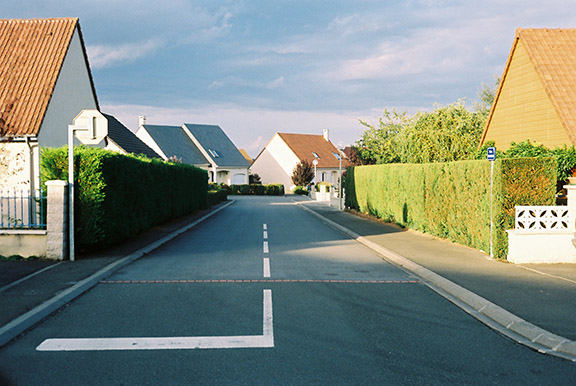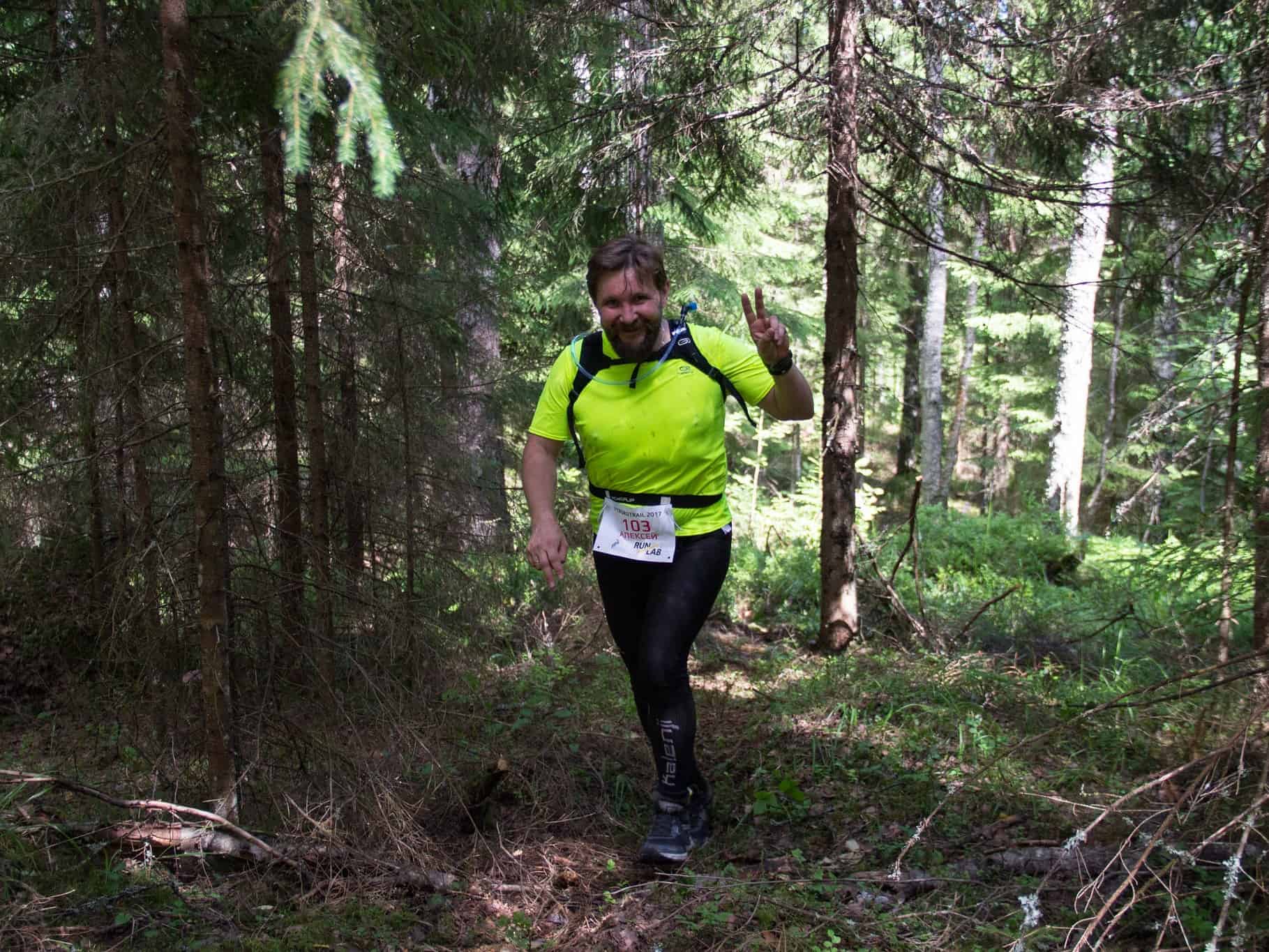Last updated on November 4th, 2022 at 11:54 am
There are more important metrics for measuring the success of a workout than calories burnt, but understanding which activities require more energy is also important. For us runners, understanding which activity burns the most calories allows us to more specifically tailor our training regimen. Plus, it is also nice to know which activity is best for keeping weight off to avoid injury or planning refuels. So, in this post, we go over whether trail running burns more calories than road running.
In fact, trail running almost always burns more calories than road running. For instance, seemingly small differences in rough, obstructed terrain and hills add up to make trail running a clear winner when counting calories burnt.
Trail Running Requires More Effort
Firstly, I’d like to argue that trail running is often so enjoyable you forget you are running.
For me, this is due to the beautiful surroundings; running through the middle of the forest surrounded by trees is way more fun than running around the neighborhood sidewalk. Plus, I would rather dodge a couple downed trees than toys left out by the neighborhood kids any day of the week.
Despite enjoying the trails so much, it actually turns out that I’m putting in way more effort than when running on the road.
For example, changes in elevation, obstructions, mud, and length of your trail will have you burning more calories than level sidewalks in town.
Trail Hills Will Leave You Shook
Furthermore, nature does not have the same constraints for its terrain as municipal roads and sidewalks.
Since trails in most park systems use available terrain as their canvas it is no surprise the variation for running routes is endless.
For instance, run just a few stretches of hilly trail to experience how a nature works your quads and glutes to see the difference.

An example of a steep hill you might encounter on a trail run. Hills burn a ton of calories, which is one reason why trail running burns calories better than road running.
More Obstructions On Trail Pathways
Plus, any given trail running route will have a variety of surprises. Often times these surprises come in the form of obstructions on the path your running. For instance, you’ll likely encounter large rocks, root systems, and downed trees at some point on your trail run.
RELATED: Can Running Give You Abs?
Dodging rocks might sound like it would have minimal impact on the amount of energy your body has to expend, but it adds up. The concept is no different than any other exercise philosophy; one-pull up is relatively easy, but if you did 100 pull-ups throughout the day the results compound drastically.
So, stepping around and over obstacles once isn’t a huge deal, but do this consistently for three, five, or TEN MILES, and the compounded calories burned are large.
Running In Mud Takes More Energy Too
Furthermore, the purest form of trail running takes place on unpaved trails. And these types of pathways can take various forms; bridle trails, single track, and bike trails to name a few. Moreover, unpaved trails are impacted by rain and mud which adds resistance to your stride.
While you may not notice the additional effort in each step, the overall workout will require more calories of energy. Think of the energy required when running in sand (similar concept).
RELATED: Best Headlamps for Trail Running
However, I hope this section doesn’t deter you from getting more involved in trail running. We suggest sticking to higher elevation if you don’t wish to encounter mud traps.
Every trail is different, but it is not uncommon for some stretches of trail to turn into a literal “mud pit”.
Also, don’t worry, muddy stretches are confined to random stretches as opposed to the entire distance. Luckily, while your socks may get muddy, these stretches of trail definitely contribute to how trail running can burn more calories.
Trail Runs Will Take Longer
Additionally, because there are more obstacles, and steeper hills, trail running takes longer. Even for the most skilled and seasoned runners trail runs tend to be at much slower paces that comparable road runs. We won’t get too much into the how much slower trail runs tend to be, but you can learn more about it here, Trail Running vs Road Running Times – Fast Moves.
The reason slower pace may make an impact on calories burnt when trail running is due to effort per distance.
RELATED: Running on an Empty Stomach
For instance, you can make a goal to run five miles on the trail and compare it to five miles run on a road. Here, you will likely find that you’ve covered the same distance, but elevation gain was greater on the trail. Overall, your effort over that five-mile distance was greater on the trail run.
Because you are expending more effort over the same distance your effort per distance is greater on a trail run. Effort, in this context, is a synonym for calories; trail running simply requires more calories per distance.
Trail Running Calorie Calculator
However, calorie calculators can not account for the true number of variables needed to accurately count the calories burned on a trail run. That being said, Calorie Counter HQ has both a hiking and a running calories burned calculator.
Both calculators are very similar in their required inputs, and I would recommend toggling between the calculators for the two different activities to see if you find a set of inputs you trust. Below are links to both calorie counters for each type of activity.
Hiking calorie calculator: Here
Running calorie calculator: Here
As previously mentioned, it is near impossible to find accurate calculators for the variables on individual trails, but it is fun trying to put numbers to our efforts.
Additionally, remember that a calorie counter can only tell you so much. Part of healthy exercise is enjoying your routine. Trail running certainly burns more calories, but it is also the perfect activity if looking to create a healthy routine. In fact studies have shown nature to positively affect mood and wellbeing.
After all, it is much easier to fall in love with running on a beautiful trail than the neighborhood sidewalk or road.
Why Road Runs Will Almost Always Burn Fewer Calories
Firstly, road routes are designed with efficiency. Just look out the window at any time you are on, or near a road. Straight lines. Almost everywhere you travel via road or sidewalk is going to be in a straight line.

If not a straight line than lines that are very close to it. For instance, you won’t find many switchbacks (a sharp cut back toward the same direction) on a city street.
Road Hills Are Hardly Hills
Furthermore, roads are built to certain standards and specifications. This is primarily for safety and efficiency. Municipalities don’t want their city roads to be too difficult or unsafe for vehicle traffic.
For this reason alone, roads are going to be more tame than trails. And the more tame a route the less calories you will burn running it.
Just think of the biggest hill with a road on it in your city. Odds are, any given road will be a gradual, tame incline for safety. Mother nature is not so kind, certain trails can be almost as steep as a staircase.
Road Routes Have Less Difficult Turns and Twists
Additionally, roads also have limits on how drastic of a turn can be incorporated into a road or sidewalk. So, the average road running routes are bound to pose less challenge than your average trail running routes.
Since a more challenging run is a run that burns more calories, trail running will burn more calories than road running.
Road Running Has Fewer Obstacles
Other than having to worry about the occasional stray toy you likely won’t find any obstacles on the road or sidewalk. No jutting roots or fallen trees to contest with on a road.
Instead, road running is efficient and better for consistent training.
For example, this efficiency is great for making a run easier or focusing on form, but it is not great for burning calories. The more challenges on your running path you need to battle, the more calories you will burn. Road running simply lacks the same terrain challenges as trail running.
Trail Running Should Be Part Of Your Calorie Burning Goals
There is a time and place for road running, and it could be that trail running isn’t for you. Plus, road running burns more calories than not running at all. However, there is simply no better all-around running workout than trail running. Steep hills, sharp turns, and engaging terrain require the optimal physical challenges to burn calories. Additionally, trail running engages more of your core than running on a treadmill or paved road.
Whether looking to lose weight, or just wanting to know what activities will require more effort, the evidence is overwhelming that trail running burns more calories than road running.
Hopefully knowing this empowers you to continue taking on those steep trail hills.
RELATED POSTS:
- Best GPS Watches For Trail Running & Ultrarunning
- The Ultimate Beginners Guide to Trail Running
- Best Men’s Trail Running Shoes
- Best Waterproof Running Jackets for Trail Running
- Trail Running vs Road Running Times
- Best Trail Running Poles
- Running While Sleep Deprived
Image credit: Jeff Hollett (source) Public Domain Mark 1.0
2nd Image credit: Viktor Vorobev (source) Public Domain Mark 1.0
3rd Image credit: fklv (Obsolete hipster) (source) Attribution-ShareAlike 2.0 Generic (CC BY-SA 2.0)

